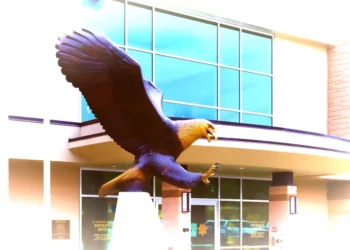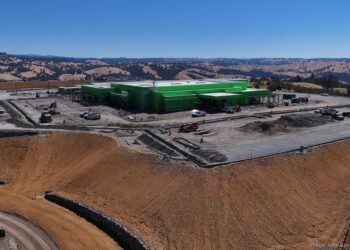PLACERVILLE, Calif. — California’s historic Sierra Nevada wine region, encompassing El Dorado County, is confronting severe challenges that echo the tumultuous days of the Gold Rush. Grape growers and winemakers are facing a confluence of economic hardships, environmental adversities, and shifting market dynamics, prompting concerns about the industry’s future.
Several prominent wineries have recently been listed for sale, including Cooper Vineyards ($7.95 million), C.G. Di Arie ($7.5 million), Skinner ($5.5 million), Rorick Heritage, formerly known as Stevenot ($3.5 million), and Terra d’Oro, formerly Montevina ($17.5 million).
The region’s grape growers are also experiencing significant setbacks. Spencer Jones, president of the Amador Winegrowers Association, noted that approximately 60% of last year’s grape crop in Amador County remained unharvested due to dwindling contracts. Jones stated, highlighting the pervasive uncertainty:
“For the 2025 vintage, no contracts are being signed right now,”
In Calaveras County’s Esmeralda Valley, veteran grower Gay Callan, who has cultivated wine grapes for four decades, expressed unprecedented concern. “I’ve never seen it this bad,” Callan remarked, revealing that she left about a third of her grapes unpicked last fall and currently has no buyers for her red varietals.
The Sierra Foothills’ unique characteristics—its remote location, arid climate, and reliance on varietals like Zinfandel—have historically set it apart from other California wine regions. However, these factors now pose additional challenges in attracting tourists and establishing a reputation for fine wines. Environmental factors, including wildfires and freezes, have further compounded the difficulties faced by growers and winemakers.
Despite these hurdles, industry members remain hopeful. Some are diversifying by introducing less common grape varieties such as Aglianico, Albariño, and Vermentino, which may be better suited to the region’s conditions. Others are adopting innovative marketing strategies to attract visitors from nearby urban centers like Sacramento and Reno. Real estate broker Ashcraft observed renewed interest in the area, stating,
“Now people are poking around. They are looking for opportunities.”
Chaim Gur-Arieh, the 90-year-old founder of C.G. Di Arie Winery, remains optimistic about the region’s prospects. “Wine is going to come back. It is impossible that it will go away,” he asserted.
“This is a great region that hasn’t been recognized. It’s just beginning.”
As the Sierra Foothills wine industry navigates these turbulent times, the resilience and adaptability of its community will be crucial in shaping its future.









